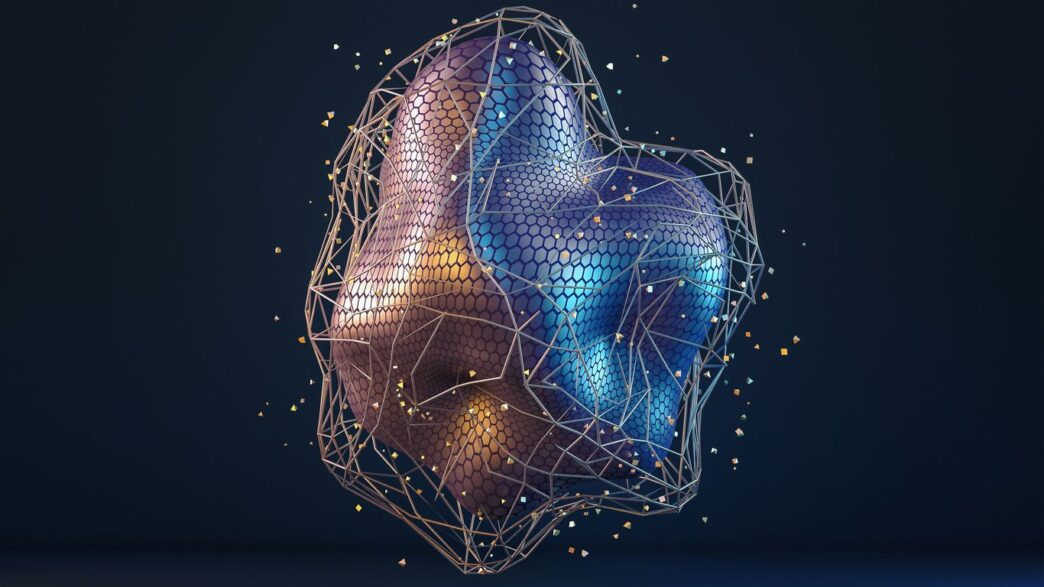So, OpenAI’s GPT-5 is here, and people are talking. It’s supposed to be a big step up from what we’ve had before. Think smarter, faster, and more helpful. It’s like going from a regular car to one with all the fancy features. This new version aims to be better at just about everything, from writing emails to helping with complex coding tasks. Let’s break down what this actually means for us.
Key Takeaways
- GPT-5 is designed to be much more accurate and less prone to making things up, which is a big deal for reliable information.
- Expect it to handle complex reasoning, almost like a person with advanced education, and process information much quicker.
- It’s getting better at understanding emotions for more natural conversations and can now process way more text at once, like entire books.
- Content creation and coding are getting a boost, with GPT-5 able to write more interestingly and even build apps from scratch.
- OpenAI is making it widely available, including a free basic option, and it’s also improving its ability to understand images and multiple languages.
Understanding OpenAI GPT-5 Capabilities
So, what’s new with GPT-5? OpenAI has been pretty busy, and it looks like this next version is a pretty big leap. They’re saying it’s their smartest, fastest, and most useful model yet. Think of it like going from a really good assistant to someone with a Ph.D. in pretty much anything. The biggest change people are talking about is how much more accurate it’s supposed to be.
Enhanced Accuracy and Reduced Hallucinations
Remember how sometimes ChatGPT would just make stuff up? Yeah, that’s called hallucinating, and it was a bit of a problem. OpenAI claims GPT-5 is way better at sticking to the facts. They’ve apparently worked hard to cut down on those factual errors. Reports suggest it’s significantly less likely to get things wrong compared to earlier versions. This means you can probably trust the information it gives you a lot more, which is a big deal if you’re using it for research or important tasks.
Ph.D.-Level Intelligence and Reasoning
This is where things get really interesting. OpenAI is hinting that GPT-5 has some serious reasoning skills, almost like a human expert with advanced degrees. It’s not just about spitting out information; it’s about understanding complex ideas and figuring things out. This advanced reasoning is supposed to help it tackle more difficult problems and give more thoughtful answers. It’s a step towards AI that can really think, not just recall.
Faster Processing and Shorter Wait Times
One of the common complaints with AI models can be the wait time. You ask a question, and then you wait for the answer. OpenAI says GPT-5 is going to be much quicker. They’ve managed to speed up how fast it processes information without sacrificing quality. This means you get those smart, accurate answers much faster, making the whole experience feel more natural and less like you’re waiting for a computer to catch up. It’s about getting the best of both worlds: smarts and speed.
Key Advancements in GPT-5 Functionality
So, what’s new with GPT-5? OpenAI has been busy, and it looks like this next version is going to be a pretty big step up. They’re talking about some serious upgrades that go beyond just making things faster.
Improved Medical Information and Health Queries
One area where GPT-5 is expected to shine is in handling health-related questions. It’s not going to replace your doctor, of course, but it’s supposed to be much better at flagging potential issues and helping you understand things like test results. Think of it as a more informed assistant for your health queries. This improved accuracy means it’s less likely to give you bad advice, which is always a good thing when it comes to your well-being. It’s a significant leap from just looking up symptoms to offering more nuanced insights.
Expanded Context Window for Large Documents
Remember struggling with those super long reports or books? GPT-5 is set to tackle that head-on. It’s rumored to have a much larger "context window," meaning it can process and remember way more information at once. We’re talking about handling documents that are twice as long as what GPT-4 could manage. This means you can feed it a massive amount of text, and it’ll still be able to make sense of it all and give you relevant answers or summaries. This capability is a game-changer for anyone working with big datasets or lengthy research papers. You can find more details about these advancements in AI development.
Greater Emotional Intelligence for Empathetic Interactions
This one’s interesting. GPT-5 is apparently going to be better at understanding and responding to emotions. This doesn’t mean it’s going to start feeling things, but it should be able to interact in a way that feels more natural and understanding. Imagine customer service bots that don’t sound so robotic, or AI assistants that can pick up on your tone. It’s about making the AI feel more like a helpful partner rather than just a tool. This could really change how we interact with AI in everyday situations, making those conversations feel a lot less awkward.
GPT-5’s Impact on Content Creation and Coding
So, what does GPT-5 mean for folks who write stuff or build software? Well, it looks like things are getting pretty interesting.
More Articulate and Less Agreeable Writing
GPT-5 is supposed to be better at writing. Think more polished emails, reports, or even creative pieces. It’s not just about sounding smarter; it’s about being more precise and less… well, fluffy. OpenAI mentioned it’s going to be "less effusively agreeable," which I guess means it won’t just say "yes" to everything or add a bunch of smiley faces when it doesn’t need to. This could make the output feel more direct and professional, which is probably a good thing for most business uses. It’s like having a writing assistant that’s helpful but also has its own mind, not just a yes-man.
Supercharged Coding Abilities for App Development
This is where things get really wild. GPT-5 is apparently a coding powerhouse. We’re talking about building websites, apps, and even games from scratch. Imagine telling the AI what you want your app to do, and it just… builds it. There was a demo where someone whipped up a web app in under five minutes using GPT-5. Sam Altman, the CEO, called coding its "superpower." It’s kind of mind-blowing to think about how fast this could speed up development. Some people worry about jobs, but the idea is that this might actually create more work because we’ll be able to build more complex things faster, leading to more demand for software overall.
Generating New Content Beyond Information Retrieval
GPT-5 isn’t just going to be a super-powered search engine. It’s expected to go beyond just finding existing information and actually create entirely new content. This means it could be used for things like brainstorming ideas, writing original stories, or even composing music. It’s moving from just being a knowledge base to being a creative partner. This opens up a whole new can of worms for what AI can do, pushing the boundaries of what we thought was possible for automated content generation.
Accessibility and User Experience with GPT-5

So, what does this all mean for you and me? Well, OpenAI is really trying to make GPT-5 something everyone can get their hands on. They’re planning a free basic version that should be available pretty much everywhere. This is a big deal, honestly, because it means more people can try out this advanced AI without having to pay anything upfront. It’s a move that aligns with their mission to make AI helpful for everyone.
Of course, if you plan on using it a lot or need the absolute top-tier features, there will be paid options. Think of it like a freemium model, but for AI. They’re rolling out different tiers:
- Free: Access to GPT-5 and a smaller, faster version called GPT-5 mini. You’ll switch to the mini version once you hit certain usage limits.
- Plus: This tier gives you significantly higher usage limits than the free plan.
- Pro: For those really heavy-duty tasks, this offers unlimited GPT-5 and access to the Pro version.
- Team/Enterprise/EDU: These are geared towards businesses and educational institutions, making GPT-5 the standard tool for daily work.
This tiered approach seems pretty sensible. It lets casual users experiment without cost, while power users and businesses can get more out of it. And for those times when you’re just hitting your free limit? Don’t sweat it. You’ll automatically drop down to GPT-5 mini, which is still a really capable model, just optimized for speed and efficiency. It’s a smart way to manage resources and keep things running smoothly for everyone. They’re also thinking about how GPT-5 can help with things like design auditing, which is pretty neat for creators.
Interconnectivity and Future Applications of GPT-5
So, GPT-5 isn’t just about talking to your computer anymore. It’s looking to connect with pretty much everything else, too. Think about your smart home devices – your lights, your thermostat, maybe even your fridge. GPT-5 is designed to chat with these things.
Seamless Interaction with Smart Devices and IoT
This means you could tell GPT-5 to "turn down the heat" and it would actually talk to your smart thermostat. It’s all part of this bigger idea called the Internet of Things, or IoT, where everyday objects are connected and can share information. GPT-5 can take the data from these devices and use it to give you better answers or take actions. For example, if your smart smoke detector goes off, GPT-5 could potentially alert you and suggest what to do next, all based on the information it gets directly from the device.
Supporting Industry 5.0 and Human-Machine Collaboration
Beyond the home, this connectivity is a big deal for workplaces too. It’s supposed to help with something called Industry 5.0. This is where humans and machines work together more closely. Imagine a factory floor where GPT-5 helps coordinate robots and human workers, making things run smoother. It could analyze what machines are doing and help people make better decisions on the spot.
Personalized Responses Through Data Interpretation
All this connection and data gathering means GPT-5 can get way more personal. It’s not just spitting out generic answers anymore. By looking at the information from your devices, your past interactions, and other data sources, it can tailor its responses specifically to you and your situation. This ability to interpret and use data for personalized interactions is a major step forward. It’s like having an assistant who truly knows your preferences and needs.
Fairness, Security, and Versatility in GPT-5
Okay, so let’s talk about how GPT-5 is trying to be a better AI all around, not just smarter, but also safer and more useful for everyone. OpenAI seems to be putting a lot of effort into making sure this new model is less likely to cause problems.
Reduced Bias for Fairer Content Generation
One big thing they’re working on is cutting down on bias. You know how sometimes AI can say things that sound a bit prejudiced or unfair? Well, GPT-5 is supposed to be much better at avoiding that. They’ve apparently put in extra work during its training to make sure it doesn’t pick up on those unfair patterns in the data it learned from. This means the content it creates should be more balanced and inclusive. It’s a big step towards making AI feel more like it’s on everyone’s side.
Robust Security Protocols Against Malicious Use
Security is another area getting a serious upgrade. Think of it like giving GPT-5 a better security system. This makes it harder for people to misuse it for bad stuff, like spreading misinformation or trying to trick you. It could even help with things like spotting phishing emails, making your online life a bit safer. They’re building in stronger defenses to keep the model from being twisted into something harmful.
Energy Efficiency and Adaptable Service Offerings
Beyond just being smarter and safer, GPT-5 is also aiming to be more practical. It’s designed to be more energy-efficient, which is good for the planet and probably for keeping costs down too. Plus, they’re making it adaptable. This means it can adjust its services based on what you need, whether you’re a casual user or someone doing really complex work. They’re even planning different versions, like a smaller, faster ‘GPT-5 Mini’ for when you hit certain usage limits on the main model. This way, you still get a capable AI without always needing the top-tier power.
Multimodal Understanding and Language Mastery
So, GPT-5 is getting pretty good at handling more than just plain text. It’s not just about reading words anymore; it can actually look at pictures and understand what’s going on in them. This is a big deal, especially for folks who might have trouble seeing. Imagine showing it a photo and asking, ‘What’s happening here?’ and getting a clear description back. That’s the kind of thing we’re talking about.
But it’s not stopping there. This new version is also a lot better with different languages. It’s like it’s learned to speak and understand the world more broadly. This means people who don’t speak English as their first language will have an easier time using it, and it’s also supposed to get better at translating between languages. Plus, it’s supposed to be smarter about figuring out what you really mean when you’re talking to it, picking up on the little things in conversations that make a difference.
Here’s a quick rundown of what that means:
- Image and Text Together: It can process both visual information and written words at the same time. You could show it a diagram and ask a question about it, and it should be able to answer.
- Global Communication: Expect better performance across many languages, making it more useful for international users and tasks.
- Contextual Smarts: It’s getting better at remembering what you’ve said earlier in a conversation and understanding the flow of dialogue, so it doesn’t feel like you’re starting over every time.
Looking Ahead
So, what does all this mean for us? GPT-5 seems like a pretty big jump. It’s supposed to be smarter, faster, and way better at understanding what we’re asking. From writing emails to helping with health questions and even coding, it’s aiming to be a more reliable tool. OpenAI is also talking about making it less likely to make mistakes and more fair. It’s kind of wild to think about how this could change things, from how we work to how we get information. While it’s not here to replace people, it sure looks like it’s going to be a powerful assistant for a lot of different tasks. We’ll just have to see how it all plays out.












